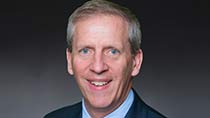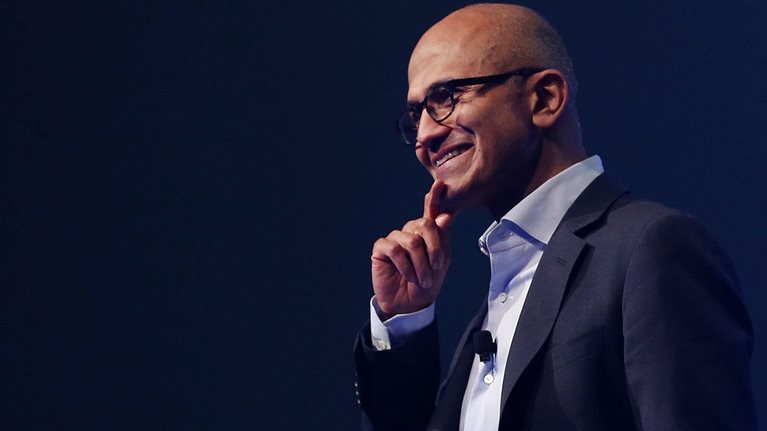Innovative organizations come in all shapes and sizes. Consider Hilcorp Energy, a privately owned oil and gas company, founded in 1989. It has more than 1,800 employees and operates assets producing over 300,000 barrels of oil equivalent per day (boe/day), all located in the United States. For the last six years, Hilcorp has been named among the top 100 best places to work by Fortune magazine and the Great Place to Work Institute; it is the highest ranked player in its sector on such lists.
What’s more, as CEO Greg Lalicker describes in this interview with McKinsey’s Peter Lambert, Hilcorp began embracing agile practices long before they were buzzwords, has put in place an innovative compensation system emphasizing fairness and shared rewards, and is comfortable that only half of the goals emerging from its planning process will be met. Hilcorp’s approach to strategy and the unique culture it has built since its founding by owner Jeff Hildebrand are thought provoking for leaders in any industry.
The Quarterly: Before we talk about your organization, can you give us a quick overview of your strategy, so we have that as context?
Greg Lalicker: Yes, our strategy is very simple: acquire large, complicated assets late in their productive life and maximize their value through the efforts of our asset teams. This strategy means we have to operate differently from the previous owners to change the trajectory and profitability of these assets; and we are able to do that because of both how we think and work.
The Quarterly: Can you say something about the mind-set that enables this different way of working?
Greg Lalicker: I like to think of the business as a dog with a tail. The dog represents all the main sources of value creation at Hilcorp—the actual oil and gas fields and the asset teams working them every day, especially those people in the field who are closest to the wellhead. Everyone else is the tail, and it’s their job to help the asset teams succeed, including the management team. Our simple precept is that the tail should never wag the dog.
The Quarterly: How do you make sure the tail doesn’t wag the dog?
Greg Lalicker: There are four practices that we insist on, all wrapped in the idea that we want to build multidisciplinary asset teams that have the necessary autonomy and the accountability for creating value from our assets.
The Quarterly: That sounds like what we might describe as an agile organization.
Greg Lalicker: We didn’t have agile in mind when we designed the organization, but we did want an entrepreneurial organization with clear accountabilities, a focus on value, and the ability to act quickly. Some of our practices—and I will set them out for you—probably are those of agile operations, but that wasn’t our starting point. Some may say they are unusual, but we have proved they work. And I believe they are also widely applicable beyond the oil and gas sector.
There are four practices: The first is our commitment to a flat organization. We have a rule that the business will never have more than five layers above any employee, and preferably fewer: executive, asset leader, operations manager, foreman, operator. By limiting the number of layers, we can get things done faster. The mantra is: every layer is time.
Look at it this way: ExxonMobil is probably the world’s best-run oil company, and it has an incredible track record of executing very large, very complex new developments every year. It creates value by making a small number of big decisions each year and then executing to a high standard. But Hilcorp creates value in a different way: we are trying to extract the last bits of value from a mature asset, and therefore we need to make 10,000 little decisions well each year. To do so, we push these decisions as close to the front line as is practical. Delegate down. The employees who often experience the biggest change in their working life when we acquire an asset are the foremen. Typically, their role previously has been to execute instructions conveyed to them by someone in the office. At Hilcorp, their job is to figure out what needs to be done and to make it happen.
The Quarterly: You mentioned reducing the layers of management. This relates to people. So, how and where are decisions made?
Greg Lalicker: This brings me to the second of our four practices; it’s how we think about delegation. Our asset team leaders are the key decision makers. They are accountable for the success of the team and are given considerable autonomy in delivering the results.
The Quarterly: How big is a Hilcorp asset team? How is it constituted?
Greg Lalicker: Our asset model is built around cross-functional teams. A typical asset team has reservoir engineers, geologists, a geophysicist, operations engineers, and technicians in the office, all of them reporting directly to the asset team leader. One of the operations engineers is the operations manager, to whom the foremen in the field report. Reporting to these foremen are the field employees, such as operators and mechanics. The team is supported by a small number of operations assistants who work with the foreman to process all the—still inevitable—paper.
A typical asset team produces anywhere from 10,000 boe/day to 60,000 boe/day. We have a firm rule that an asset team can’t get so big or so complicated as to require more layers of management—if it’s so complex that it needs more layers, then we split the asset.
The Quarterly: Is there a typical profile for an asset team leader?
Greg Lalicker: Well, fundamentally, they are strong technical people who understand what it takes to grow both rate and reserves in oil and gas assets. They need personal and professional drive, an ability to delegate, good people skills, and, occasionally, a thick skin. Asset team leaders should never be satisfied. They are the ones looking for new ways to add value to the asset. We find that asset team leaders are usually—but not invariably—homegrown within Hilcorp.
The Quarterly: How do these asset teams relate to the centralized functions?
Greg Lalicker: Again, everyone not in an asset team is there to support the teams. For example, the drilling group’s primary reason to exist is not to drill wells, it is to help the asset teams make more money; and that is how they are evaluated. The same philosophy holds true for all the other centralized functions.
The Quarterly: How do you handle procurement?
Greg Lalicker: Actually, we have no procurement department—for us, it would be antithetical to speed and to accountability. Procurement departments can lock in a poor service provider for a small discount and then force the whole line to use it. That would be the tail wagging the dog.
Put it this way, we have over half the people in the company in the field making decisions. They decide whether to use existing spare parts from the yard or to go buy new. They shop around for the best deal they can get and decide what creates the most value for the company in the long term. That way they secure what we need and hold the vendors accountable.
The Quarterly: Great, so those pertain to the structure. How about the processes and the people? How does Hilcorp achieve alignment with so many people making decisions?
Greg Lalicker: Yes, the third practice is the way we align goals and incentives. We want it to be in everybody’s best interest that Hilcorp succeeds and, when we do succeed, that everybody shares in the rewards equitably. This alignment helps motivate everyone making the 10,000 little decisions to do the right thing.
The Quarterly: Can you explain how this works in practice?
Greg Lalicker: OK, first let me take goals and give you an example. Hilcorp sets company-wide targets over a series of five-year periods, with incentives for all employees if Hilcorp achieves the goals. The effect is to ensure that everyone makes decisions in the interests of meeting those company-wide targets. From 2006 to 2011, for example, the target was to double the production rate from 40,000 boe/day to 80,000 boe/day, to double reserves from 125 million boe to 250 million boe, and to double the value of the business from $1 billion to $2 billion.
The Quarterly: And the link to incentives?
Greg Lalicker: When the 2011 goal was met, every employee got $50,000 to spend on a car—the same amount for everyone who was here the whole five years. Our 2011 to 2015 target was to reach 120,000 boe/day, 500 million boe, and $6 billion value, and the reward was $100,000 cash per employee. Now the latest target is 275,000 boe/day. The reward will be the cash equivalent of one boe for every day a person was employed at Hilcorp during those five years. Depending on prices, that will come out to $50,000 to $75,000 for anyone who was employed for the entire five years. Operations people like the idea that the first barrel they produce each day is theirs—as long as the company meets its targets.
The Quarterly: Is that it, or are there other forms of alignment through incentives?
Greg Lalicker: Hilcorp pays annual bonuses linked to overall company performance—production rate, midstream income, reserves, and operating cost. The annual bonus payout is up to 60 percent of salary and is the same number for every employee—no team component, no individual component—one number for the entire organization. We also have a program that ensures that employees own a synthetic working interest in the fields: they get to effectively buy into the assets on the same basis that Hilcorp itself bought in.
On the other hand, we target our base compensation at Hilcorp to be roughly average for the relevant job market. It is only through achieving success that people can earn significantly more. Initially, some staff might take a cut in base pay, so they have to believe that the upside potential is real.
The Quarterly: I notice that incentives are linked to production, reserves, and value—but not safety . . .
Greg Lalicker: That’s right. Safety is too important to be in the incentive program. Safety is a requirement, not an upside. If people aren’t working hard to operate safely, then they are fired.
The Quarterly: What are the challenges in this model of incentives and compensation?
Greg Lalicker: One challenge we have to watch out for is the “free rider” problem [employees not pulling their weight but profiting from the company’s performance]. It is pretty simple to deal with: our people are expected to succeed in their job, and if they don’t, then we coach them and try to help them improve. If that doesn’t work, we look to see if they could succeed someplace else in the company. And if they don’t succeed there, then they are out.
The Quarterly: Does individual freedom and team autonomy come as a shock to new arrivals? How do you imbue the Hilcorp culture in new recruits?
Greg Lalicker: It often takes about two years before new staff fully gets how the company works. It can be a bit of a shock. It’s hard for people to realize they have the freedom to do something until they see that people don’t get chewed out for making reasonable mistakes. New employees usually need to see us set the plan, create the bonus program, and actually pay out before they fully believe in the model. Once they get it, most of them like it—our turnover for staff who have been here more than two years is extremely low.
The Quarterly: Is there a set of mandatory processes or rules for Hilcorp staff?
Greg Lalicker: Like any organization, we have rules in place. But the point here is that rules and process don’t “drive the bus”; they are there to help, not to be restrictive.
Our core values are different from rules and are nonnegotiable. We have five: integrity, urgency, ownership, alignment, and innovation. We have an action attached to each, so integrity is “do the right thing,” urgency is “act today, not tomorrow,” and so forth. Our operating procedures are the way we apply those values, but if they ever come into conflict, the values win out.

The Quarterly: What are the limits to this way of handling things?
Greg Lalicker: Great question. And this is the fourth of the four practices—just enough process and controls. Speed is essential. For example, we start the planning cycle with the asset teams in November, by December we have a bottom-up plan from the assets, and by end of December we will have a top-down plan informed by what we know from the assets. Our aim is for a P50 plan: half the time we should be above plan, and half below. Goals should be aggressive and only slightly unreasonable.
Any more detailed planning is a waste of time, because we know it will change. The plan is to provide inputs to annual targets for rate, reserves, and costs. This is where the asset team leaders are held to account for rate, reserves, and cost targets. But we aren’t strict about individual line items; if they generate better ideas over the course of the year, they should pursue them.
The Quarterly: In other organizations, we have seen a tendency for management to intervene as soon as something goes wrong or deviates from a plan. How have you managed to maintain the culture and principles as Hilcorp has grown?
Greg Lalicker: Maintaining our entrepreneurial culture requires lots of personal energy, discipline, and tact at the top. It’s easy to deal with an event via a rule or a standard, but then you end up killing entrepreneurship and accountability. The harder way is to develop good leaders and hold them accountable.
You have to leave the asset team leaders in control. If any of them brings a proposed drill well to me for approval, I will ask some tough questions to make sure they have done their homework. If I don’t like it, I may say, “I wouldn’t drill the well,” and explain why, but it is the asset manager’s decision. If I am convinced that they have done all the necessary work to properly evaluate the investment, I won’t override their judgment.
Likewise, when an asset is off track, I expect the asset team leader to understand what is wrong and what they are going to do to make things better. I only want 20 percent of the conversation to be about what went wrong— 80 percent should be about what they are going to do now to make it better.
My job is simply to offer help and hopefully give good advice to the asset teams. I’m not here to tell them what to do—they are the “dogs,” after all.



